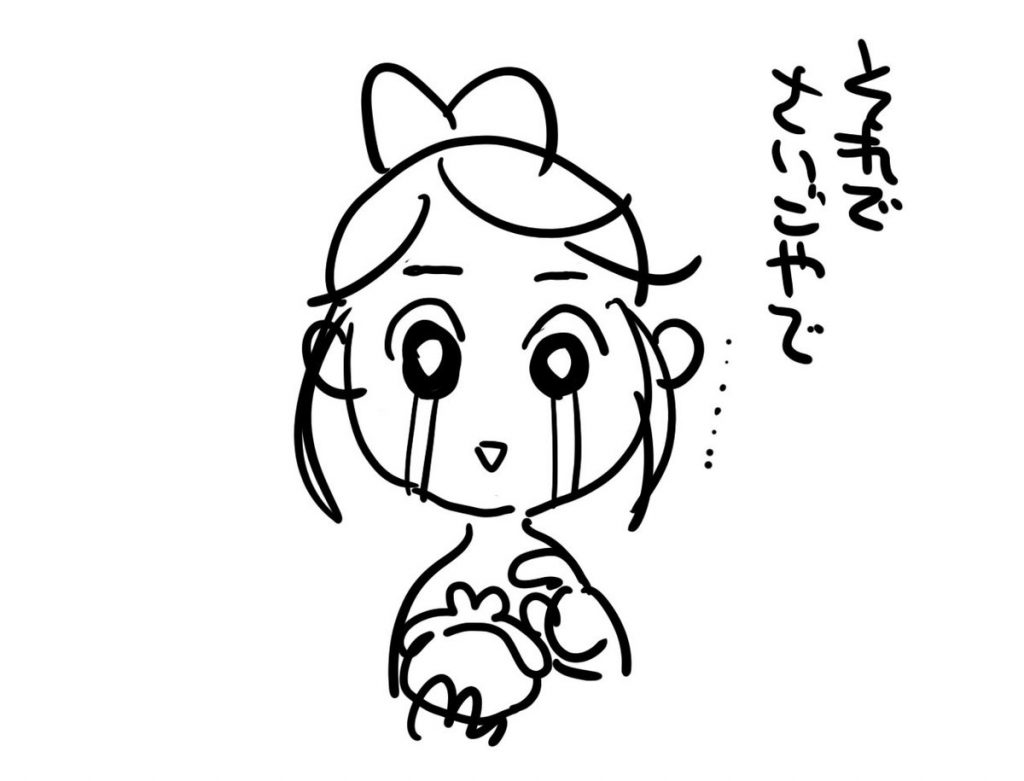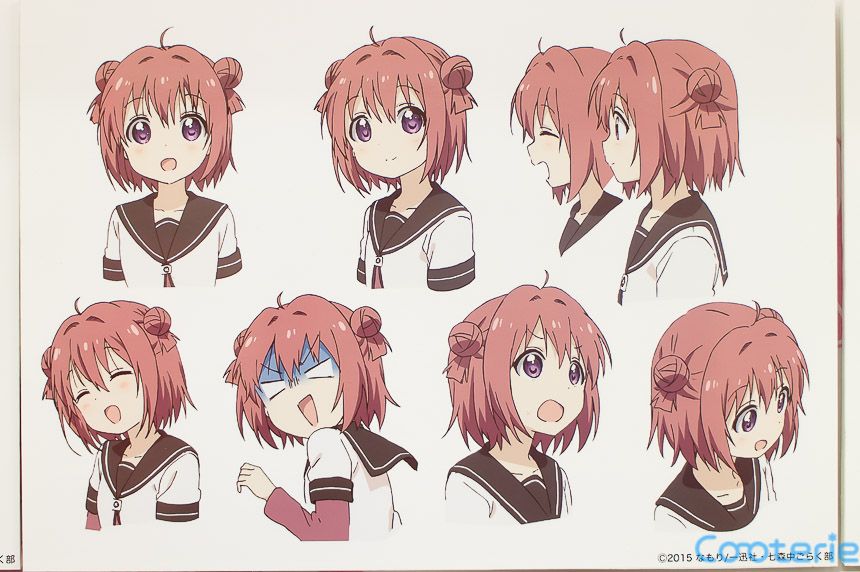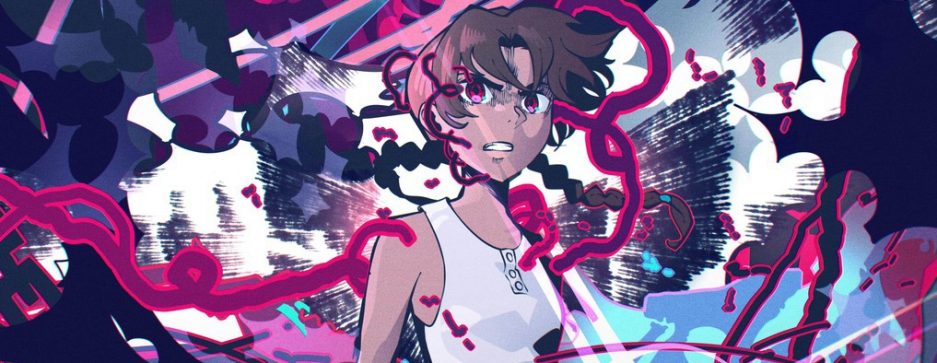Over the last few years the figure of the production assistant (制作進行, seisaku shinkou) has been widely popularized by Aoi Miyamori, the protagonist of the anime Shirobako. Finally, after years of ill-treatment, this vital figure for the completion of animated productions is recognized in its fundamental role: following the production of an episode from the beginning to the end in every process, transporting materials left and right, and always being in agreement with dozens of professionals.

This figure is indispensable, however, they are not often associated with episodes of the highest qualitative and besides perhaps confirming some unusual presence among the ending credits, these figures almost never make their appearance in the sakuga discourse in the same way that a well-known episode director or a group of idiosyncratic animators would.
But there is a notable exception to this trend: his name is Shota Umehara and for years his output has been synonymous with productive solidity and rich animation to the point of becoming a staple of TV anime, thanks to his immeasurable commitment and heartfelt passion for his work. Today we will retrace his career to celebrate his latest work: the fifth episode of Fate / Grand Order Absolute Front Babylonia!
Believe it or not, originally Umehara’s dream was not to work in the anime industry but to become a successful advertiser. Growing up, however, that ruthless world began to make him more and more afraid, so he decided to move his ambitions towards the passion that had accompanied him since he was a child: animation.
“It’s something in my genes” he said laughing one time during an interview. He fondly remembers late-night anime like Last Exile and Uchuu no Stellvia but also series like Digimon, which he recorded in the morning and then watched during his school club activities in the afternoon.

In 2007, immediately after graduating from university presumably in March he started looking for a job and only in October he finally found a place at Doga Kobo, a studio that will become inextricably linked to his figure. He recalls that during the interview he was asked what his favorite anime was. He replied with a random Ghibli title, a popular and safe choice during this type of interview, but he wrote in his resume that he would never give up and he would not quit his job, which is unfortunately really common among production assistants due to their colossal workload. Laughing, he jokes that after 7 years he really left the studio, but not to leave the industry at all as we will find out later.
The first anime he worked on was the eleventh episode Shin Koihime Musou ~ Otome Dairan ~, an unfortunate and now forgotten title of the studio and after that he was asked to follow various outsourced episodes at Doga Kobo including the eighth of And Yet the Town Moves. Needless to say, it will take time to hone his skills and build a network of contacts to overcome any obstacle. Only 4 years after his debut we will see him shine with the sixth episode of Nisemonogatari, in which he inaugurates his partnership with Ryu Nakayama through one of the most interesting sequences of the entire series, but especially with the eleventh episode of second season Yuru Yuri.
Yuru Yuri represents the beginning of the golden age of Doga Kobo and the episode assigned to Shota Umehara is probably one of the most enjoyable and well-built moments of the season: the ambitious storyboard of Minami-ke’s director Masahiko Ota, is elegantly supported by the ability of top-level animators like Masayuki Nonaka and Enishi Oshima. It should be noted that the two were still linked to Dogakobo rather than Umehara in the strict sense but they will help him out even after his resignation from his position at the studio.

Another interesting aspect of Umehara’s participation in the second season of Yuru Yuri is his precocious scouting of a sixteen years old China to realize the key animation of a scene in the sixth episode. Although today it has become common practice to find young animators without prior experience through the internet and to give them work remotely, at the time it was much rarer to entrsust all of this to a complete stranger, still at school and residing in a distant city.
Although the firsts China .gifs were decidedly unripe compared to what he would have achieved even just one or two years later, Umehara was the first to notice the peculiar ability with which the young artist described daily life and the vivid feelings of his characters. But China is not the only figure that was scouted by him during Yuru Yuri.
Shortly after he participated in GJ Club and Love Lab, specifically Umehara was in charge of episodes 3 and 8 of the first and episodes 1, 3, 5 and 12 of the second. One of the stars of these two works is the animator Ryosuke Nishii that Umehara had personally contacted for some scenes of Yuru Yuri’s second series after seeing his independent animated shorts. Before then Nishii had never produced key animation and was not even an inbetweener but Umehara decided to put his trust on him anyway and in a year Nishii went from being an absolute nobody to a de facto main animator of Love Lab where he created every kind of sequence, from the most cartoonish to those with a more realistic staging.
Over the years, Nishii has grown to such an extent that he was in charge of a long sequence on the film Mirai by Mamoru Hosoda and animated several “solo” episodes in which he was the only key animator credited.
Although GJ Club is undoubtedly a series that has been “sacrificed” from the production point of view for the success of Love Lab, the eighth episode remains really solid thanks to the presence of the usual Masayuki Nonaka but also thanks to Hirofumi Okita, Hiromitsu Seki , Yuuki Watanabe and of course Ryosuke Nishii. On the contrary, the second TV series is perhaps the peak of Doga Kobo’s experimentation on the animation side and more than a paragraph here, it would need a long article.
Mikakunin de Shinkoukei represents an interesting parenthesis in Umehara’s career for two reasons: first of all he moved from dealing with single episodes as production assistant to coordinating the entire production at a general level as a production manager (制作デスク, seisaku desuku) and for the first time he also took a creative role with the opening’s storyboarding process. His job was to make rough drafts that would then be used by director Yoshiyuki Fujiwara to create the actual storyboard. However, the end result uses a completely different type of dance from Umehara’s idea and since then, the producer has unfortunately no longer dedicated himself to such tasks.
After Mikakunin he worked as production assistant and the production manager for Plastic Memories, a series in which young animators like China, Masami Mori and Ken Yamamoto participated alongside the old guard and immediately afterwards he had his first, and to date only, assignment as an animation producer (アニメーションプロデューサー, it’s just the Japanese transliteration of the english term), for Sansha Sanyou, a series which, in a way, ends the golden age of the studio with a bang.
The biggest difference between the role of production manager and that of animation producer lies in the fact that the first focuses mainly on the supervision and direction of production assistants while the second deals more than anything with recruiting staff for the series as a whole. This does not mean, however, that a production manager cannot find themselves recruiting animators just like an animation producer would.
Sansha Sanyou is home of the most successful outputs of already mature animators like Akira Hamaguchi, Hirofumi Okita and Enishi Oshima but also the opportunity to make new talents like Hayate Nakamura and Yuki Sato shine. Yet it seems that Umehara is not entirely satisfied with the result, since then he has not dedicated himself to extensive activities but only to single episodes again and seems to question his own ability as an animation producer for a whole show.
After Sansha Sanyou, Umehara dedicates himself as production assistant to Himoto Umaru chan and Touken Ranbu Hanamaru. These two series are definitely a qualitative dropdown compared to the previous ones and, unfortunately for Dogakobo, were also the last to which Umehara participated. He in fact announced on Twitter that he will leave the studio to work on The Idol@ster side M, made by that part of A1 Pictures that would later go on to create the modern Cloverworks. He worked on the sixth episode but was forced to move immediately to Darling in the FranXX to help out with a tight schedule.
The reason for this change of studio is essentially due to his admiration and commitment to A1 Pictures animation producer Yuichi Fukushima, whom Umehara met years earlier thanks to the animator Yuusuke Matsuo. The latter advised during the production of the second series of Yuru Yuri to follow Fukushima on Twitter, who quickly returned the follow. Umehara asked Fukushima to eat something with him and they arranged to meet at a Yakiniku restaurant in Higashinakano.
He was impressed by his personality to such an extent that the next day he asked his superiors at Doga Kobo if it was possible to work for Fukushima’s A1 Pictures. He was really enthusiastic because he considered Fukushima a person very similar to him but at the same time more way more skilled. In his own words, his desire was “to see how special people did my same work and how different they are from me”.
They soon became friends and started writing frequently to exchange opinions about the anime and TV series they watched. Later during the years of Cloverworks this correspondence will materialize in the creation of the blog “Anime seisaku koukan nisshi” in which the two exchange virtual letters in which they discuss their job experiences and way of thinking. If you know Japanese a little I strongly recommend it, it is very interesting to understand the mentality behind certain production choices.
Before The Idolm@ster he actually worked under unclear circumstances on Eromanga Sensei #08, one of the most impressive episodes of an already impressive series. Shin Wakabayashi, episode director and storyboarder, was already an important acquaintance of him from Sansha Sanyou. While the animation supervisor Maiko Kobayashi, who at the time still didn’t know him so well, will become an important ally of Umehara in the future as we will see in her episode of Fate Grand Order and in the 22/7 PVs.
The episode is an elegant union of the styles of the more solid A1 Pictures with that of the golden age of Doga Kobo thanks to the presence of Masayuki Nonaka, Hirofumi Okita, Hidenori Makino, and Kanako Yoshida. It was also a reunion with Yuru Yuri’s beloved character designer Chiaki Nakajima, who worked closely with Umehara since his episode of Yet the Town Moves.
On this episode we also have the testimony of an interesting creative interference of the production assistant: Umehara personally negotiated with the director Takeshita which parts of the storyboard to correct to give the particular flow of Wakabayashi’s style enough space within the episode. Fortunately, Takeshita conceded easily to not touch a particular scene which both the production assistant and the episode director loved from the bottom of their hearts.
A similar occurrence also happened for the tenth episode of Saekano Flat, in which the usual Okita and Nonaka are accompanied by Jin Oyama and Takumi Sunakohara. On the blog managed together with Fukushima, Umehara widely praised Oyama’s abilities on a newer show so it does not seem at all unlikely that he will become one of his regulars now that some of his acquaintances from Dogakobo like Nonaka and Oshima could be too busy with Bibury projects.
His support for Fukushima projects continues with Darling in the FranXX and The Promised Neverland, respectively in episodes 5, 7 and 22 of the first and in the opening of the second. Episodes 7, directed by Touko Yatabe who was previously in charge of Sansha Sanyou’s second episode, is not full of action scenes like many others but it does stand out thanks to the continuous acting scenes that provide the characters with greater three-dimensionality and emphatic strength, often absent in the series, thanks to the prowess of Hayate Nakamura, Akira Hamaguchi, Keisuke Kobayashi, Takumi Sunakohara , Yuki Yonemori and Kazutaka Sugiyama. Sugiyama also collaborated in the Neverland opening along with an inspired Ken Yamamoto who finally rejoins the production assistant so many years after Plastic Memories.
Although episode 22 is decidedly smaller than the fifth and the seventh, it has still have a careful attention to character’s acting, just think of the scene of subtle acting performed by Yoshikuni Ono, a trusted animator from Sansha Sanyou, who enriches with emotion the climax of story.
After Eromanga Sensei and Sansha Sanyou, the relationship with Wakabayashi intensified a lot with their collaboration in the creation of a promotional video for the book Boku robot no goshi no kimi koi wo suru and then in the animated PVs of the group virtual idols 22/7 to the point that between his new goals there is “to help Wakabayashi become an anime movie director before his forties“.
Umehara’s passion for 22/7 is not surprising: I want to remind you that his first dream was to become a great publicist and Akimoto, the producer of 22/7 is extremely famous for being the man who led the group idol of AKB48 to successful peaks never seen before so much as to have written books and articles on the subject that Umehara had even read. In addition, the original character designs were made by Yukiko Horiguchi, one of the most admired character designers since his Dogakobo days.

I absolutely recommend the vision of these tender and rich in atmosphere PVs. In addition to Jin Oyama and Maiko Kobayashi, there is the presence of an incredible Keisuke Kobayashi in one of his most jaw-dropping sequences. During production he also met Yuta Yamazaki, who after directing the sixth and eighth videos will be chosen as the director of his Fate / Grand Order episode.
We do not know what the future awaits for Umehara but it seems quite happy to work at the Cloverworks, so much so that he has described it as “a studio where (from a production point of view) things can be done that in other studios are simply unthinkable. Besides the other producers and production assistants are really talented, to the point that they would do well even without Fukushima. “
Fukushima, on the other hand, has very high expectations for him, so much so that according to him Umehara could even become the main figure of the company in the future. Considering that among his dreams there was to participate in a film before the age of thirty, it would not surprise me to see him announce his first film as a producer in the next years.

There is a lot of interesting info on this article, but I think it’s not very cohesive. It feels like I just read splattered trivia and name drops.
Thanks for your feedback. We’ll take what you said in consideration. It’s quite hard to write about someone’s career without having several parts being essentially info-dump. But we’ll try to improve that aspect as much as we can next time.
I agree with you, there are so many parts that even repeat themselves. However, when it comes to an activity so little documented in detail as that of the anime production assistant it is very complicated to make a reasoned index of the works of a professional to explain their technical and stylistic evolution as I am used to doing. Unfortunately the only way to make a reasonated index of a producer at the moment is to write about the results he has achieved quality-wise and the working connections that the various projects have formed, together with the very few trivia that tell of their personality or the motivation for certain choices. This is something that could be unfortunately repeated in my opinion if I had to hypothetically write an article on some other important producer, but It’s something that usually doesn’t happen in the case of an animator or a director, where you can feel their own personal touch way more directly. In this regard, I suggest you read the articles dedicated to individual artists that I normally write on my blog to fully understand the difference between these two types of situations.